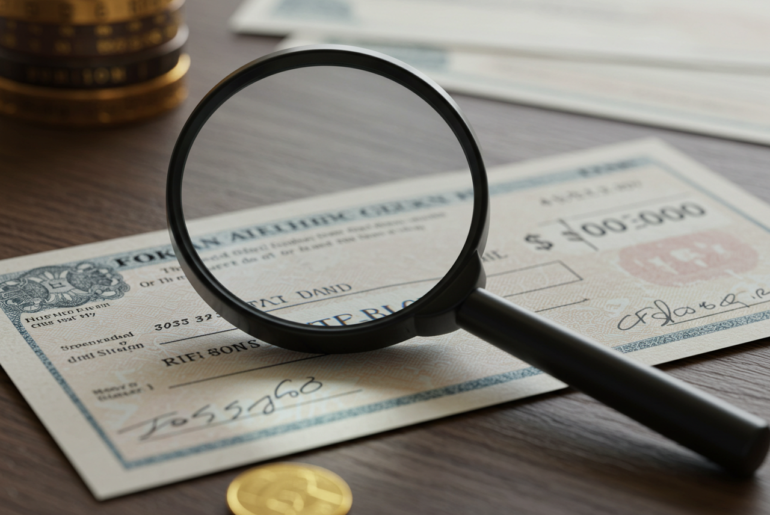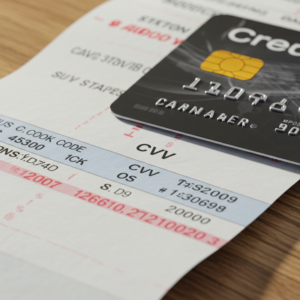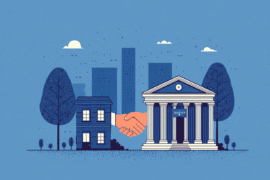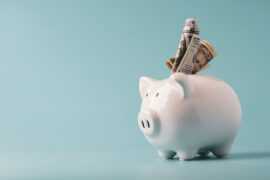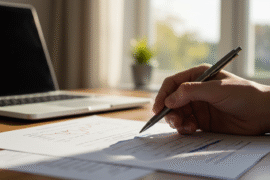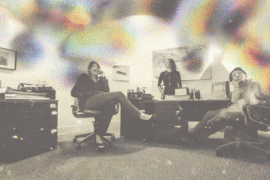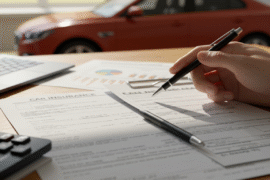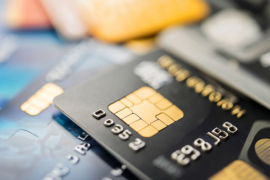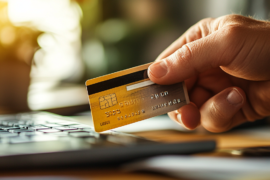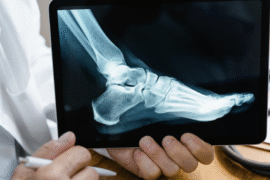This article may contain references to products or services from one or more of our advertisers or partners. We may receive compensation when you click on links to those products or services. Nonetheless, our opinions are our own.
The information presented in this article is accurate to the best of our knowledge at the time of publication. However, information is subject to change, and no guarantees are made about the continued accuracy or completeness of this content after its publication date.
- Key Highlights
- Introduction
- What Are Fake Refund Check Scams?
- Common Techniques Used by Scammers
- How to Spot a Fake Check: A Beginner’s Guide
- Tools and Resources to Help You
- Step-by-Step Guide to Identifying Fake Checks
- What to Do If You Receive a Suspicious Check
- Conclusion
- Frequently Asked Questions
- Recommended Reads
Key Highlights
- Fake check scams happen when you get a check and someone asks you to send some money back.
- These scams are common and can lead to big losses for people.
- Fake checks are getting harder to notice and feel more real.
- You can identify fake checks by checking their origin, examining their security features, and observing for odd signs.
- It’s essential to tell the right authorities about suspected scams to help stop this kind of fraud.
Introduction
Scammers are constantly changing their methods. A prevalent one now is the fake refund check scam. These scams may look safe or even sound at first. However, they can hurt your money. Knowing how these scams operate, how to spot them, and where to report them is essential. This article provides easy steps and resources to help you stay ahead.
What Are Fake Refund Check Scams?
Fake refund scams fool people into thinking they have received real payments. They usually use fake checks that seem like actual personal checks, cashier’s checks, or money orders.
Some fake checks have the names and addresses of real banks. They might even use stolen checks from actual people. This makes it harder to see the fraud. Scammers often tell you to deposit the check and return some money. They say it’s for taxes, fees, or overpayments. When your bank finds out the check is fake, the scammer is already gone, and you must pay the full amount.
Common Techniques Used by Scammers
Scammers use different tricks to fool people into putting money into fake checks and giving some of it back. Here are the more common ways they do this:
- Overpayment Scam: A scammer sends you a check for more than what you agreed on. They ask you to return the extra money through a wire transfer or gift cards.
- Advance Fee Scam: The scammer acts like a possible employer or lender. They ask you to pay fees or taxes upfront before you can get the job or loan.
- Lottery or Sweepstakes Scam: You get a message saying you’ve won a prize. But first, they tell you to send money for fees or taxes before you can claim it.
These are just some examples. If something looks too good to be true, it often is.
Voted "Best Overall Budgeting App" by Forbes and WSJ
Monarch Money helps you budget, track spending, set goals, and plan your financial future—all in one app.
Get 50% OFF your first year with code MONARCHVIP
How to Spot a Fake Check: A Beginner’s Guide
Fake checks are getting harder to spot, and even skilled people can get tricked. You can lower your risk by learning to notice the warning signs. You can also take real steps to confirm if they are real.
Tools and Resources to Help You
Many groups offer tools and resources to help you find and report fake checks:
- American Bankers Association (ABA) Foundation: Provides helpful information on stopping fraud.
- Internet Crime Complaint Center (IC3): A government site where you can report online scams, like fake checks.
- U.S. Postal Inspection Service: Looks into mail fraud. If you get a fake mail check, report it immediately.
Step-by-Step Guide to Identifying Fake Checks
Follow these steps to see if a check is real or fake:
Step 1: Verify the Source
If you get an unexpected check, start by finding out who it is from. Look for a known company, a government office, or a real bank. Use trusted contact details, like official websites (especially those ending in “.gov”) or verified customer service numbers, to confirm if the check is real. Don’t trust the phone number or website printed on the check.
Step 2: Inspect for Irregularities
Next, examine the check closely:
- Look for errors, different fonts, and misspelled names or addresses.
- Check if the check amount, date, or name seems odd or changed.
- Look at the print quality. Blurry logos, sloppy text, or missing security features like small text or watermarks can indicate fakery.
- Review the routing number and make sure it matches the bank name.
Be very careful if the check amount is much more than you thought. Be wary if the sender tells you to send back some money.
Step 3: Search Online
If you are still unsure, look up the sender or organization’s name online. Look for scam reports, complaints, or fraud alerts. You can also check the mailing address or bank using official online databases.
What to Do If You Receive a Suspicious Check
If you get a check and feel something is off:
- Please do not put it in the check.
- Call your bank and tell them what happened.
- Tell the government at ReportFraud.ftc.gov.
- If it was mailed, inform the U.S. Postal Inspection Service.
- Contact the payment provider (like MoneyGram or Western Union) if you used wire transfers or gift cards.
Conclusion
Fake refund check scams can hurt your wallet, especially if you don’t know how they operate. Luckily, there are simple ways to keep safe: check where the money is coming from, look closely at the check, and report anything that seems off. Being careful and paying attention to unexpected payments is one of the best ways to avoid tricks. Always remember that if someone sends you money and then asks you to return some of it, that’s a big warning sign.
Frequently Asked Questions
How can I spot a fake check scam?
Fake check scams often involve getting a check with instructions to send money back. Look for signs like unexpected payments, overpayments, or requests to wire money or buy gift cards. Always check who sent the check before you do anything.
What should I do if I think a check is fake?
Do not put the check in the bank. Instead, call your bank right away and let them know. You should also report it to the Federal Trade Commission or the U.S. Postal Inspection Service.
Can a bank tell right away if a check is fake?
No. Banks must quickly make money available, but it can take days or weeks to confirm whether a check is real. If the check is not good, you might still have to pay the full amount.
What agencies should I contact about fake checks?
Report fake checks to the FTC, the U.S. Postal Inspection Service or the Internet Crime Complaint Center (IC3). You can also contact the fraud department at your bank.
Are all cashier’s checks safe to accept?
No. Even cashier checks can be fake. Always check the check with the bank that gave it to you before you deposit it, especially if you did not think you would get one.

Reviewed and edited by Albert Fang.
See a typo or want to suggest an edit/revision to the content? Use the contact us form to provide feedback.
At FangWallet, we value editorial integrity and open collaboration in curating quality content for readers to enjoy. Much appreciated for the assist.
Did you like our article and find it insightful? We encourage sharing the article link with family and friends to benefit as well - better yet, sharing on social media. Thank you for the support! 🍉
Article Title: How to Spot and Avoid Fake Refund Check Scams
https://fangwallet.com/2025/04/15/avoid-fake-refund-check-scams/The FangWallet Promise
FangWallet is an editorially independent resource - founded on breaking down challenging financial concepts for anyone to understand since 2014. While we adhere to editorial integrity, note that this post may contain references to products from our partners.
The FangWallet promise is always to have your best interest in mind and be transparent and honest about the financial picture.
Become an Insider

Subscribe to get a free daily budget planner printable to help get your money on track!
Make passive money the right way. No spam.
Editorial Disclaimer: The editorial content on this page is not provided by any of the companies mentioned. The opinions expressed here are the author's alone.
The content of this website is for informational purposes only and does not represent investment advice, or an offer or solicitation to buy or sell any security, investment, or product. Investors are encouraged to do their own due diligence, and, if necessary, consult professional advising before making any investment decisions. Investing involves a high degree of risk, and financial losses may occur including the potential loss of principal.
Source Citation References:
+ Inspo
There are no additional citations or references to note for this article at this time.
